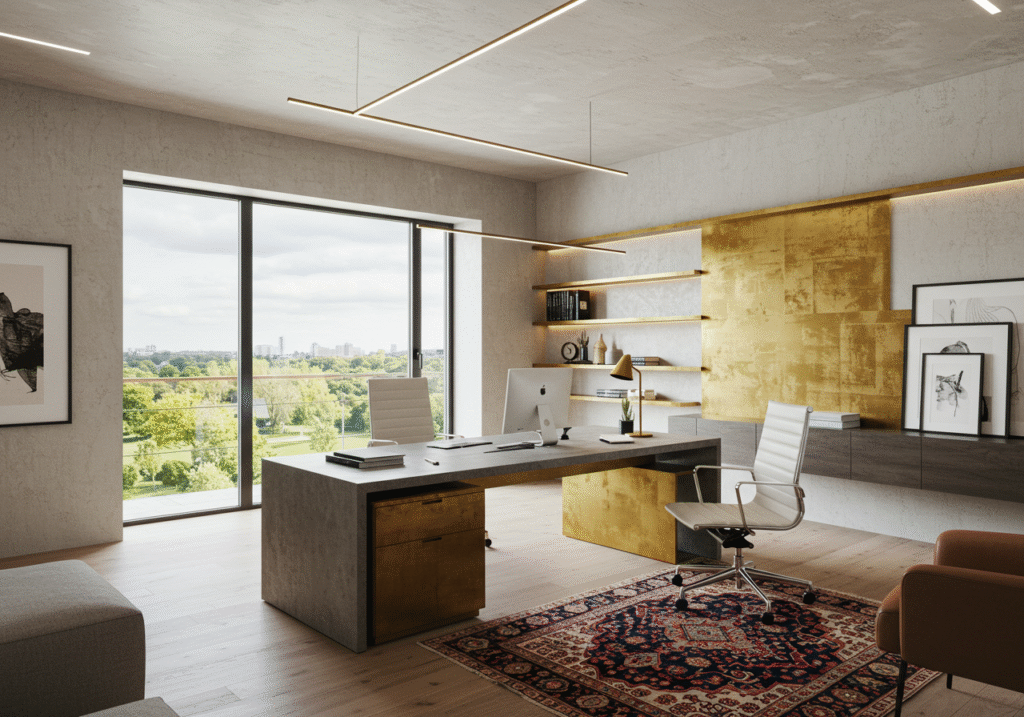In today’s fast-evolving corporate landscape, the CEO’s office is more than just a private workspace. It has become a visual and functional embodiment of leadership, brand identity, and company culture. The right design choices balance authority with approachability, innovation with comfort, and style with sustainability. These 15 modern CEO office design trends reflect how spatial decisions can amplify executive presence while supporting productivity and well-being.
Office Designs
Contents
- 1 Office Designs
- 1.1 1. Leadership Presence Through Space
- 1.2 2. Command Center Framing
- 1.3 3. Material Authenticity and Texture Over Color
- 1.4 4. Ambient Atmosphere and Integrated Lighting Strategy
- 1.5 5. Visual-Flow Transparency
- 1.6 6. Executive Workspace Identity
- 1.7 7. Hospitality-Integrated Office
- 1.8 8. Architectural Minimalism and Spatial Asymmetry
- 1.9 9. Curated Professional Style Through Structure and Restraint
- 1.10 10. Hybrid Work Model Adaptability
- 1.11 11. Green Materials and Sustainability Focus
- 1.12 12. Acoustic Privacy and Employee Well-Being
- 1.13 13. Informal Discussion Zones and Focused Work Areas
- 1.14 14. Privacy Pods and Quiet Zones
- 1.15 15. Collaborative and Modular Spaces with Wellness at the Core
- 2 Conclusion:
1. Leadership Presence Through Space
A CEO’s office must project authority without feeling intimidating. Design elements such as elevated sightlines, curated sight corridors, and subtle framing of the executive desk create a sense of command while remaining welcoming. Leadership presence is not just about scale but proportion—balancing openness with a strong focal point, such as a framed view or signature feature wall. This spatial strategy signals confidence and direction to both staff and visitors.
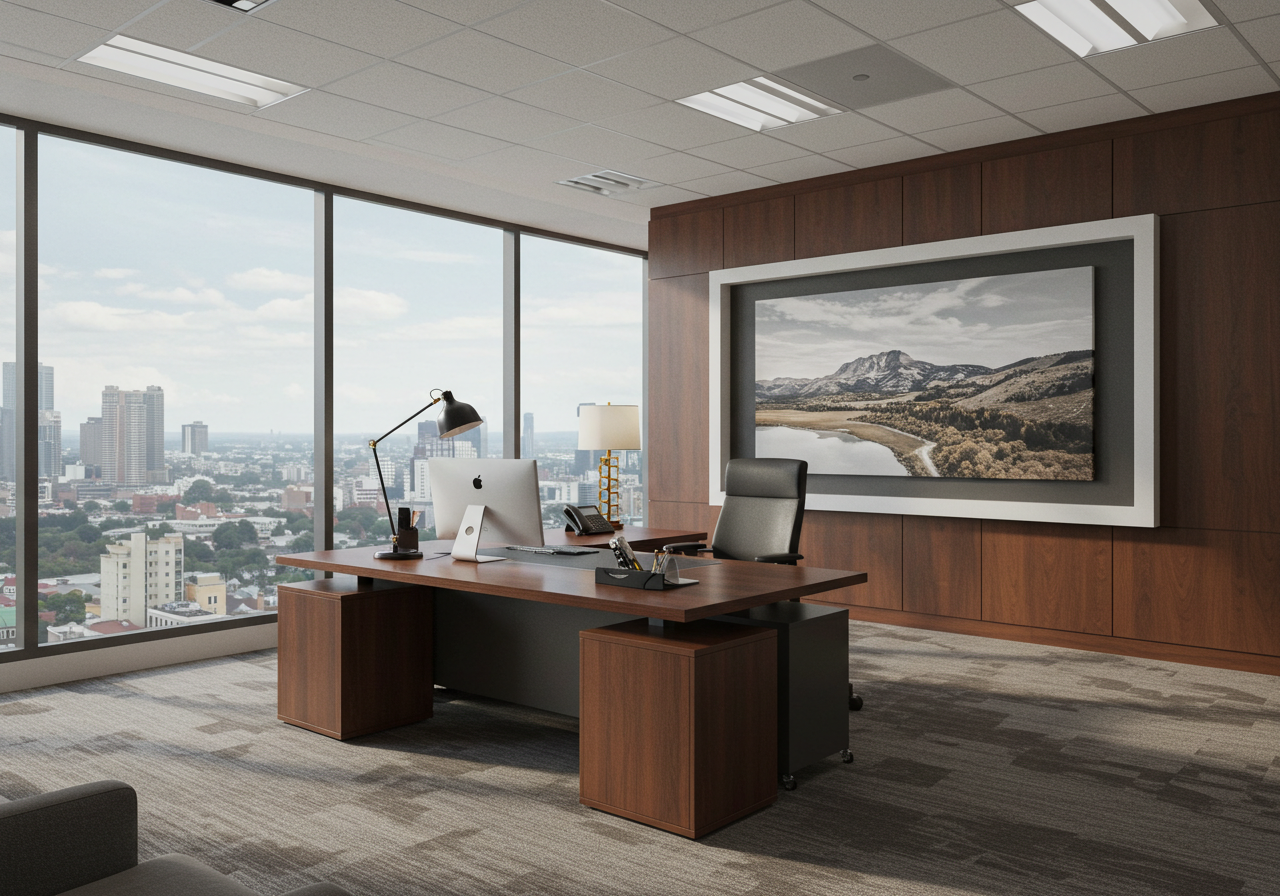
2. Command Center Framing
Modern CEO offices are designed like strategic hubs rather than traditional corner suites. The “command center” concept integrates digital dashboards, multifunctional meeting zones, and ergonomic control over lighting and temperature. This framing ensures the executive is at the center of both information and decision-making, without creating visual clutter. Transparent glass partitions or partial walls maintain accessibility while defining the executive’s operational nucleus.
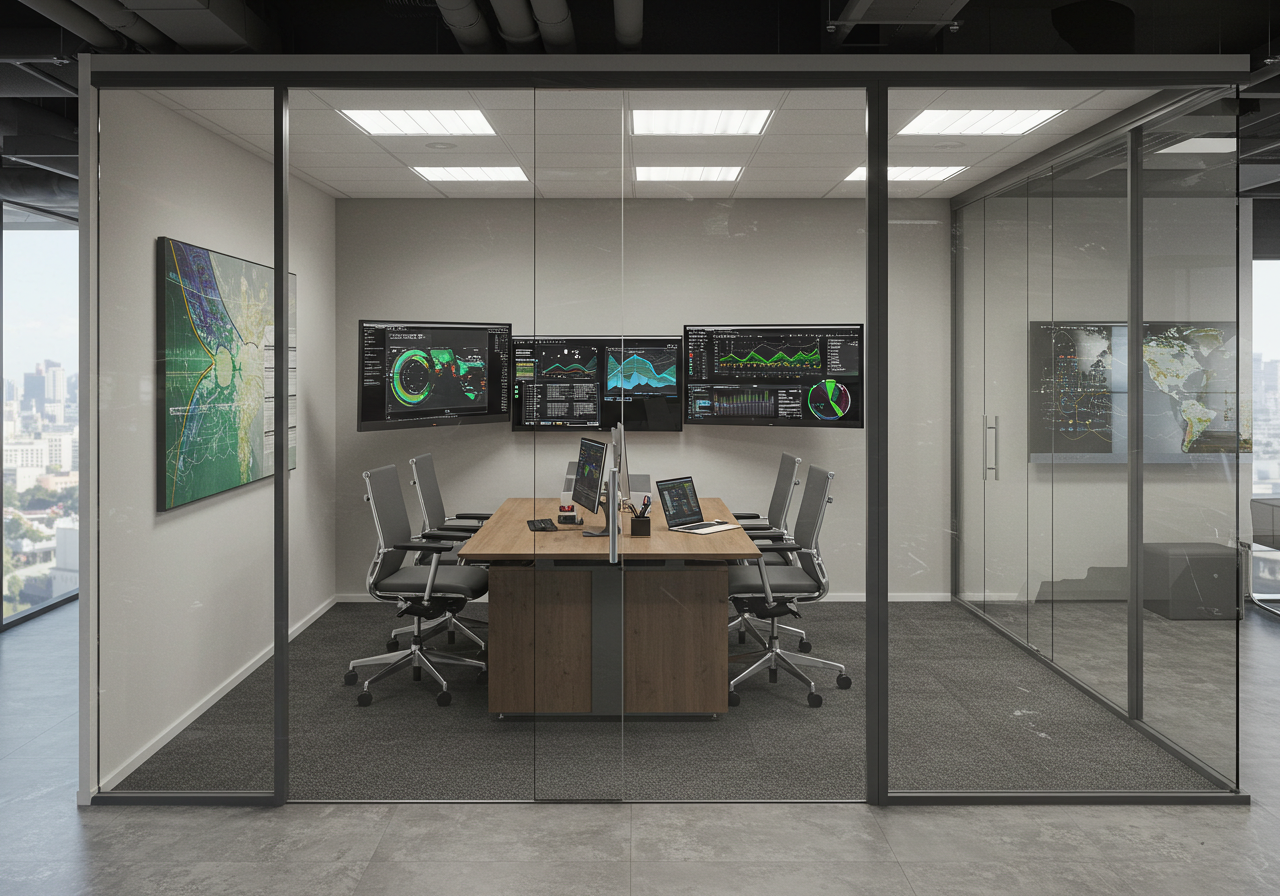
3. Material Authenticity and Texture Over Color
Today’s most impactful CEO offices lean away from overly colorful palettes and focus instead on authentic materials and tactile richness. Reclaimed wood, brushed metals, honed stone, and natural textiles create depth through texture, delivering a sense of grounded sophistication. These materials also reflect sustainability values, resonating with modern corporate responsibility initiatives. Texture-driven design delivers warmth and character without distracting from the workspace’s primary functions.
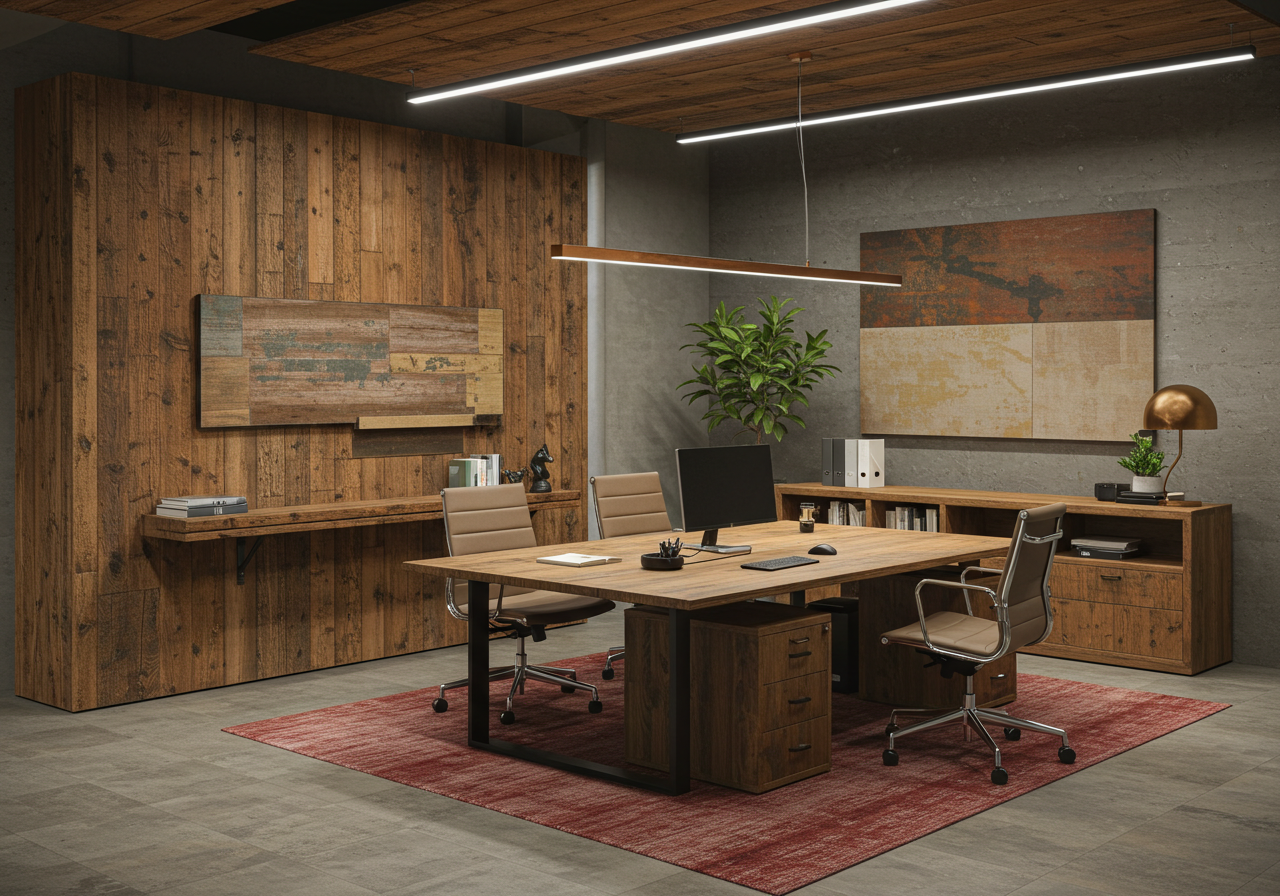
4. Ambient Atmosphere and Integrated Lighting Strategy
Lighting in executive workspaces has evolved far beyond overhead fixtures. A layered approach combines natural daylight, recessed LEDs, and programmable accent lighting to enhance both focus and ambiance. Integrated lighting not only reduces eye strain but also highlights architectural features, textures, and key elements of the room. By carefully orchestrating brightness and tone, designers create an adaptable environment that supports everything from high-stakes meetings to quiet reflection.
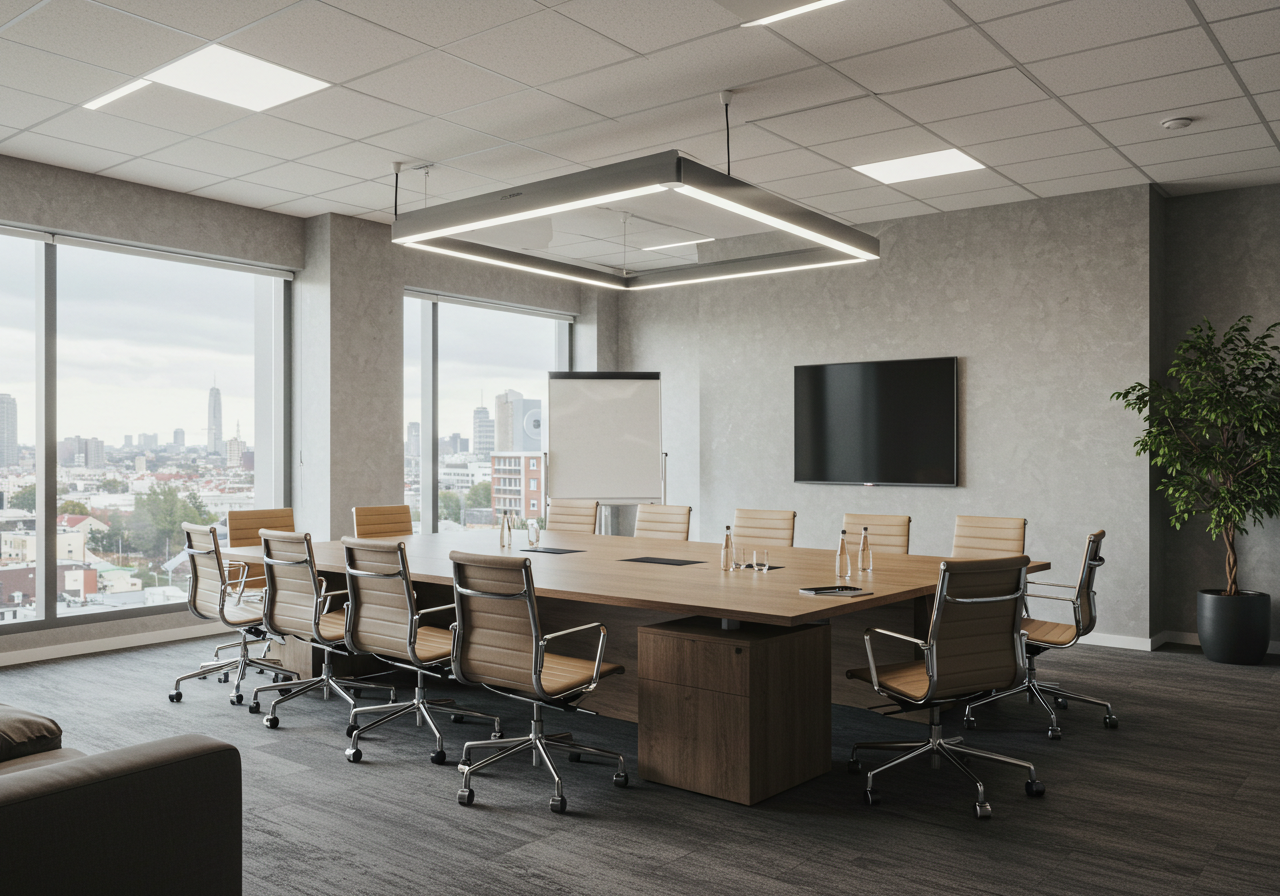
5. Visual-Flow Transparency
Glass walls, open sightlines, and strategically placed mirrors give the illusion of a larger, more breathable space. This transparency fosters trust by making the CEO’s environment accessible while preserving necessary privacy through acoustic glass or smart film technology. Visual flow also improves connectivity with adjacent workspaces, reinforcing the leader’s role as part of, not apart from, the team. Controlled openness helps communicate transparency in both space and leadership style.
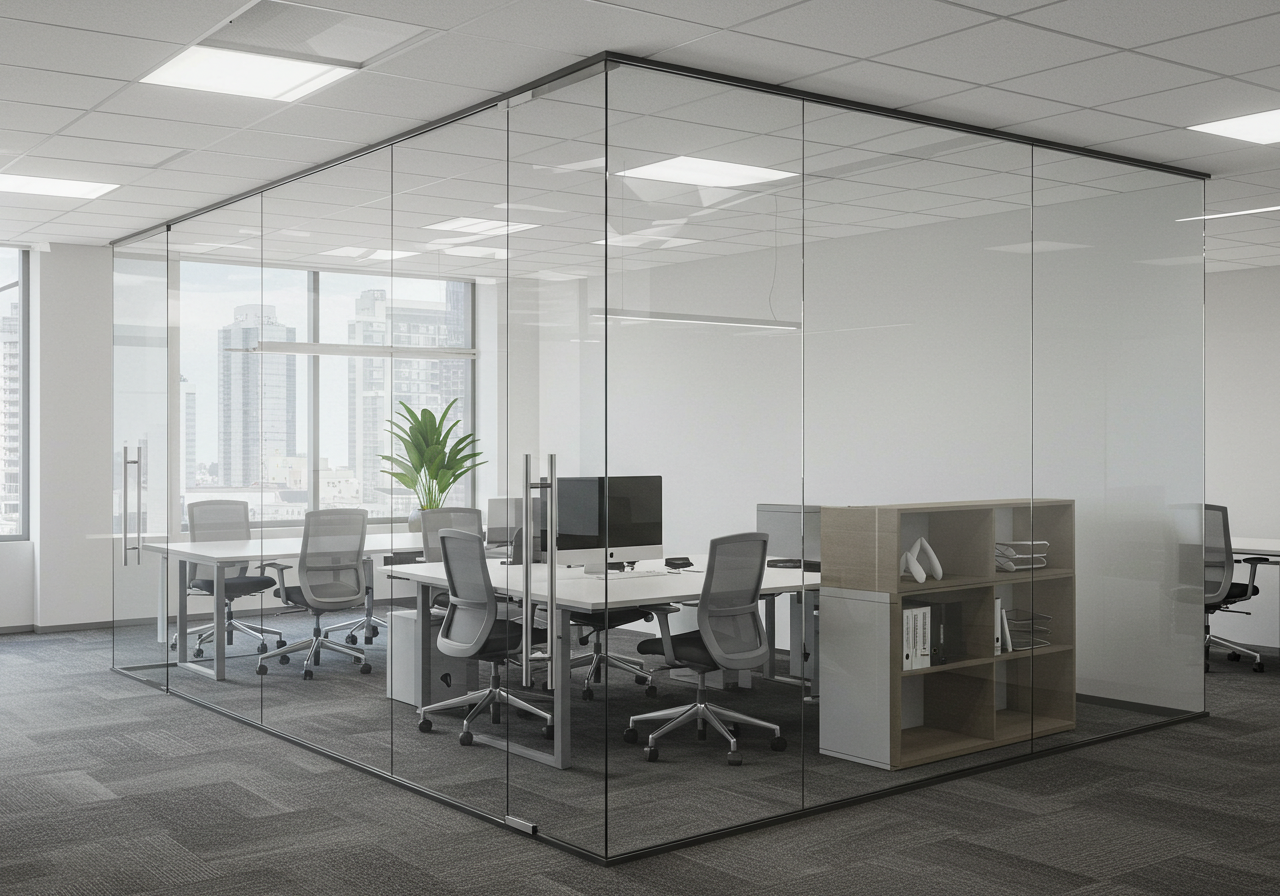
6. Executive Workspace Identity
A CEO’s office should communicate both individual personality and company ethos. This can be achieved through curated art, custom furniture, or signature elements like a bespoke conference table or branded installation wall. These touches create a strong identity without overwhelming the design with unnecessary ornamentation. The goal is to craft a space that feels distinctly personal yet professional, aligning with the organization’s narrative.

7. Hospitality-Integrated Office
Modern executives are blurring the lines between workspace and hospitality. Lounge-style seating, coffee bars, and even small-scale wellness amenities (like meditation corners) make the office a destination rather than a silo. This approach creates a sense of warmth, encourages informal discussions, and supports hybrid work by providing a versatile environment for both internal and external meetings. The hospitality model signals a CEO’s commitment to relational leadership.
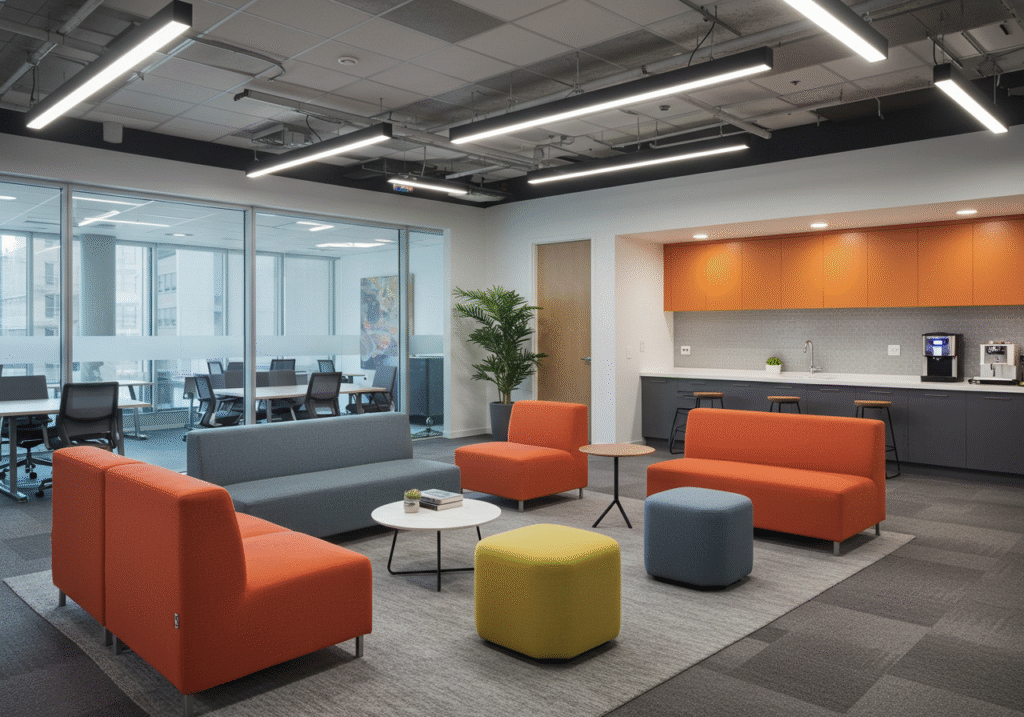
8. Architectural Minimalism and Spatial Asymmetry
Minimalism remains a cornerstone of modern CEO office design, but with a twist—spatial asymmetry. Rather than rigid symmetry, offices now incorporate staggered furniture arrangements, off-center focal points, and dynamic architectural forms. This asymmetry keeps the space visually engaging while maintaining the calm, uncluttered feel minimalism provides. The effect suggests innovation and forward-thinking leadership without sacrificing elegance.
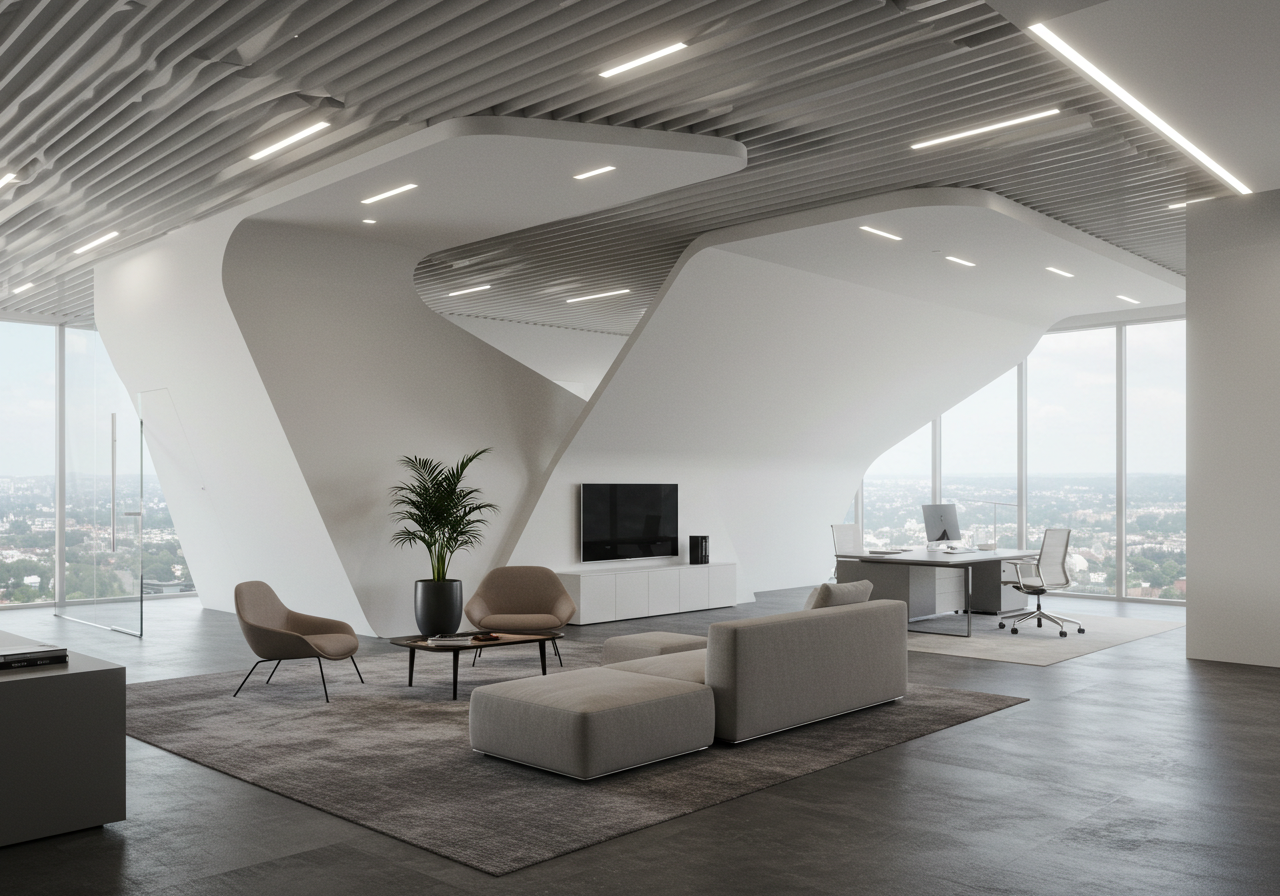
9. Curated Professional Style Through Structure and Restraint
Every design decision—from desk placement to shelving—should embody restraint and intentionality. Structured layouts, with clear functional zones, reflect an organized mind and an efficient organization. By avoiding over-decoration, the office maintains a timeless quality that outlasts fleeting trends. This curated style enhances credibility and creates an environment conducive to serious decision-making.
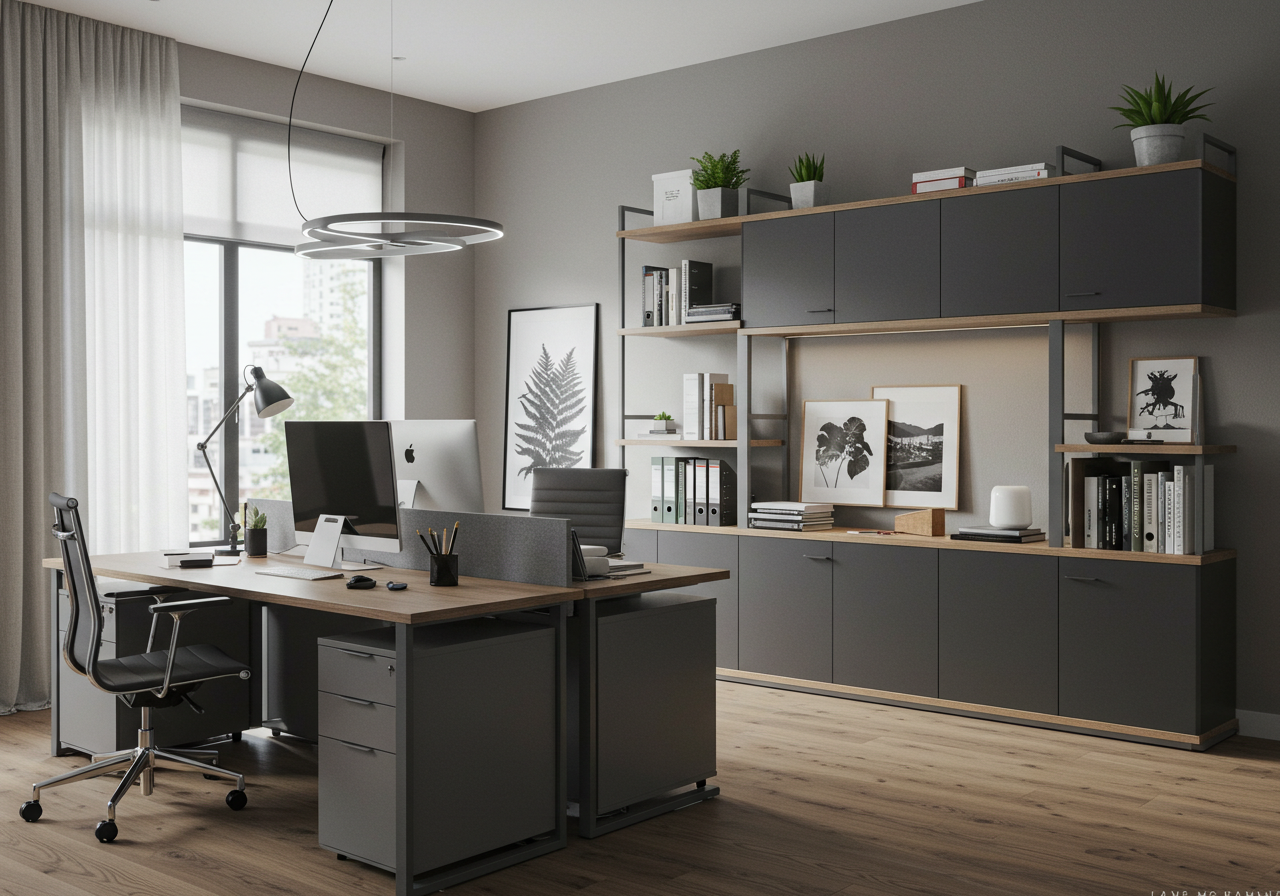
10. Hybrid Work Model Adaptability
The CEO’s office must accommodate the realities of hybrid work, which requires flexible and reconfigurable layouts. Modular furniture, retractable partitions, and multipurpose surfaces allow the office to transform from a private workspace to a team hub seamlessly. Technology integration, like wireless conferencing systems, supports remote collaboration without visual clutter. These adaptable spaces reflect a leadership style that embraces change and flexibility.
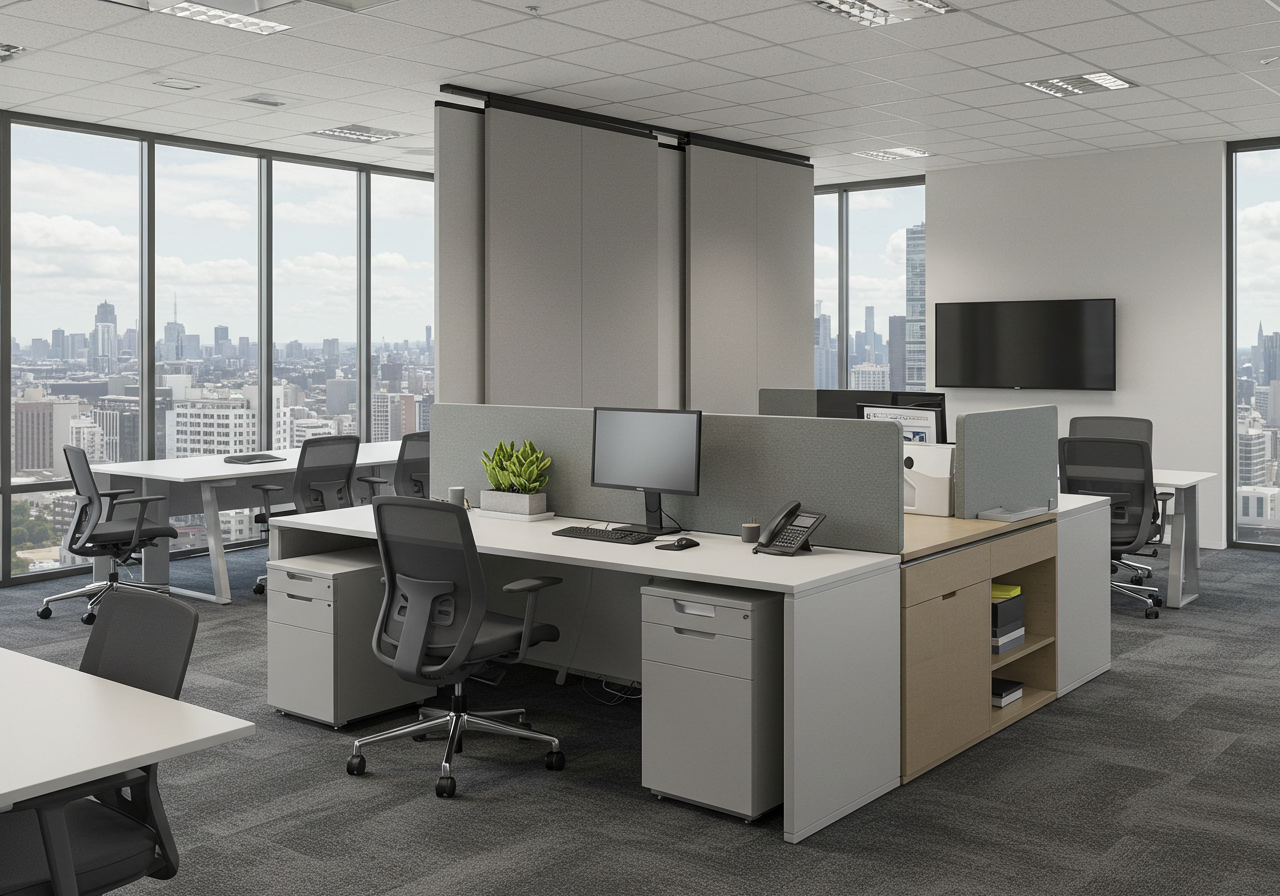
11. Green Materials and Sustainability Focus
Sustainability is no longer optional in executive office design. Bamboo, reclaimed wood, recycled metals, and non-toxic finishes contribute to a space that is both luxurious and environmentally responsible. Beyond materials, sustainable design often incorporates energy-efficient systems, natural ventilation, and live greenery to improve indoor air quality. These elements communicate a CEO’s commitment to the planet while enhancing workplace comfort.
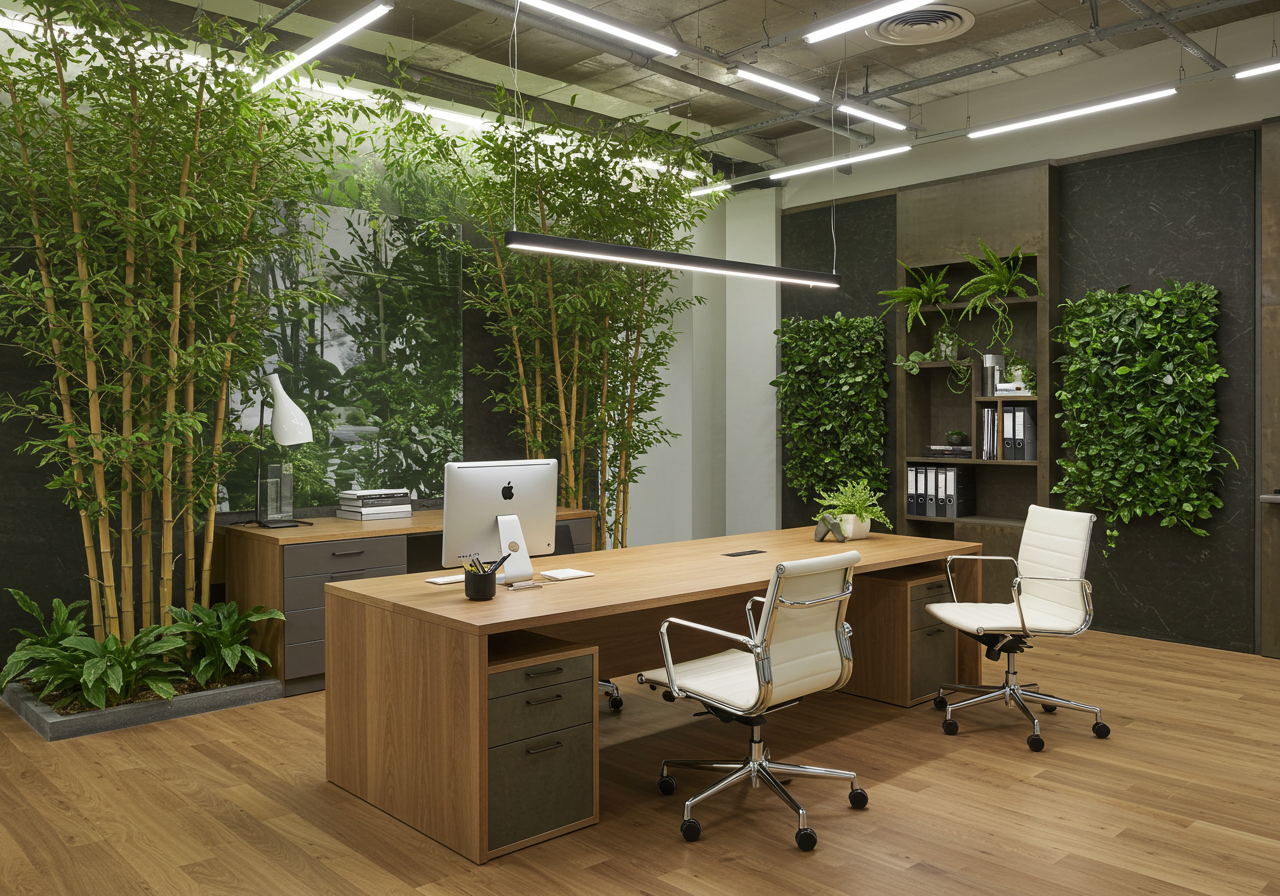
12. Acoustic Privacy and Employee Well-Being
A serene, acoustically balanced office is vital for focus and confidential conversations. Sound-absorbing panels, acoustic glass, and strategic zoning prevent distractions without isolating the executive. Wellness-driven features, like adjustable sit-stand desks and ergonomic seating, further promote comfort and long-term health. By prioritizing well-being, the CEO sets an example for the rest of the organization.

13. Informal Discussion Zones and Focused Work Areas
Modern leadership spaces blend social and solitary zones. Lounge corners, small roundtables, and movable whiteboards encourage quick collaboration, while dedicated quiet areas allow for deep focus. This balance reflects the multifaceted nature of the CEO’s role, which requires both strategic solitude and approachable engagement. It also reduces reliance on formal conference rooms for spontaneous discussions.
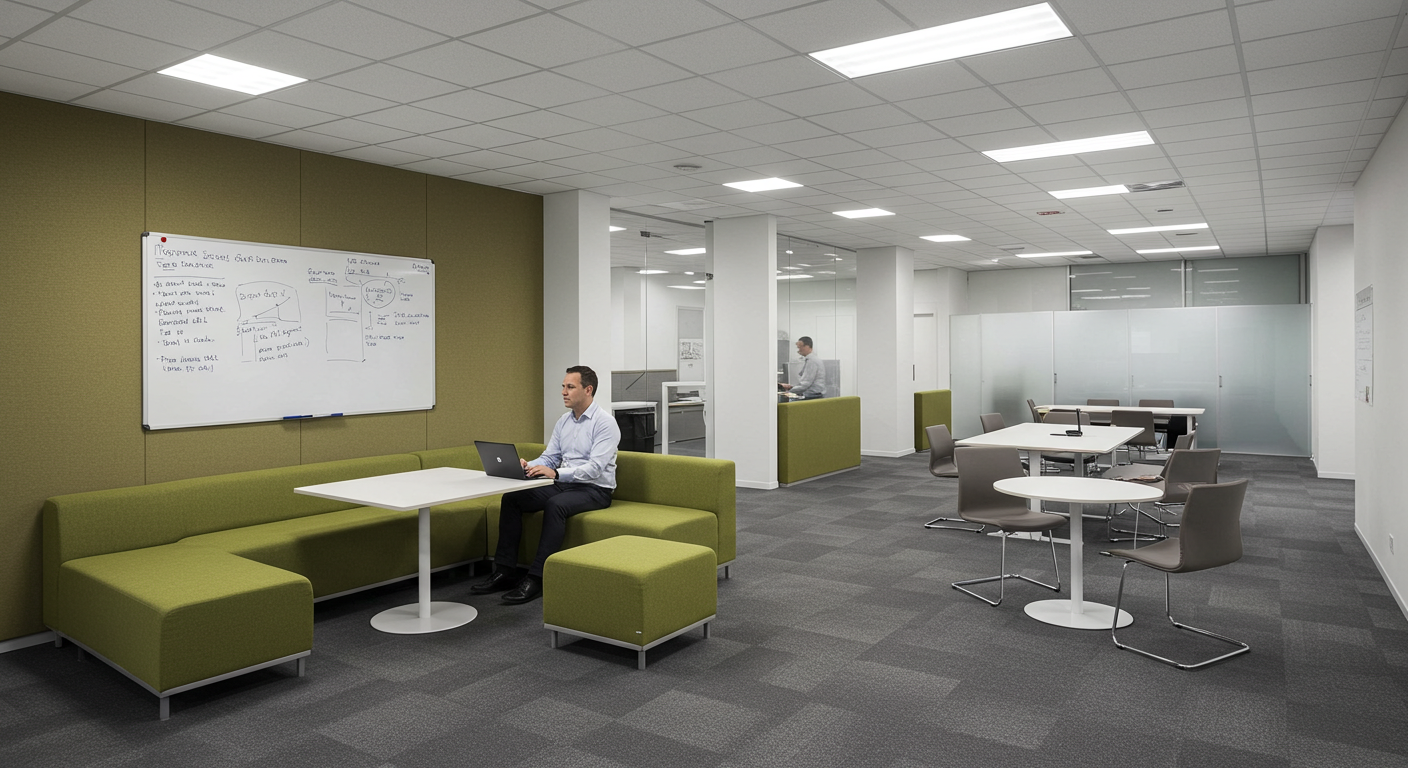
14. Privacy Pods and Quiet Zones
For CEOs who frequently take confidential calls or work on sensitive projects, privacy pods offer an elegant solution. These enclosed, soundproof mini-environments can be integrated seamlessly into the office without sacrificing aesthetic cohesion. Quiet zones also double as retreats for high-focus work, ensuring the CEO’s productivity even in bustling headquarters. These spaces align with broader trends in workplace well-being and flexibility.
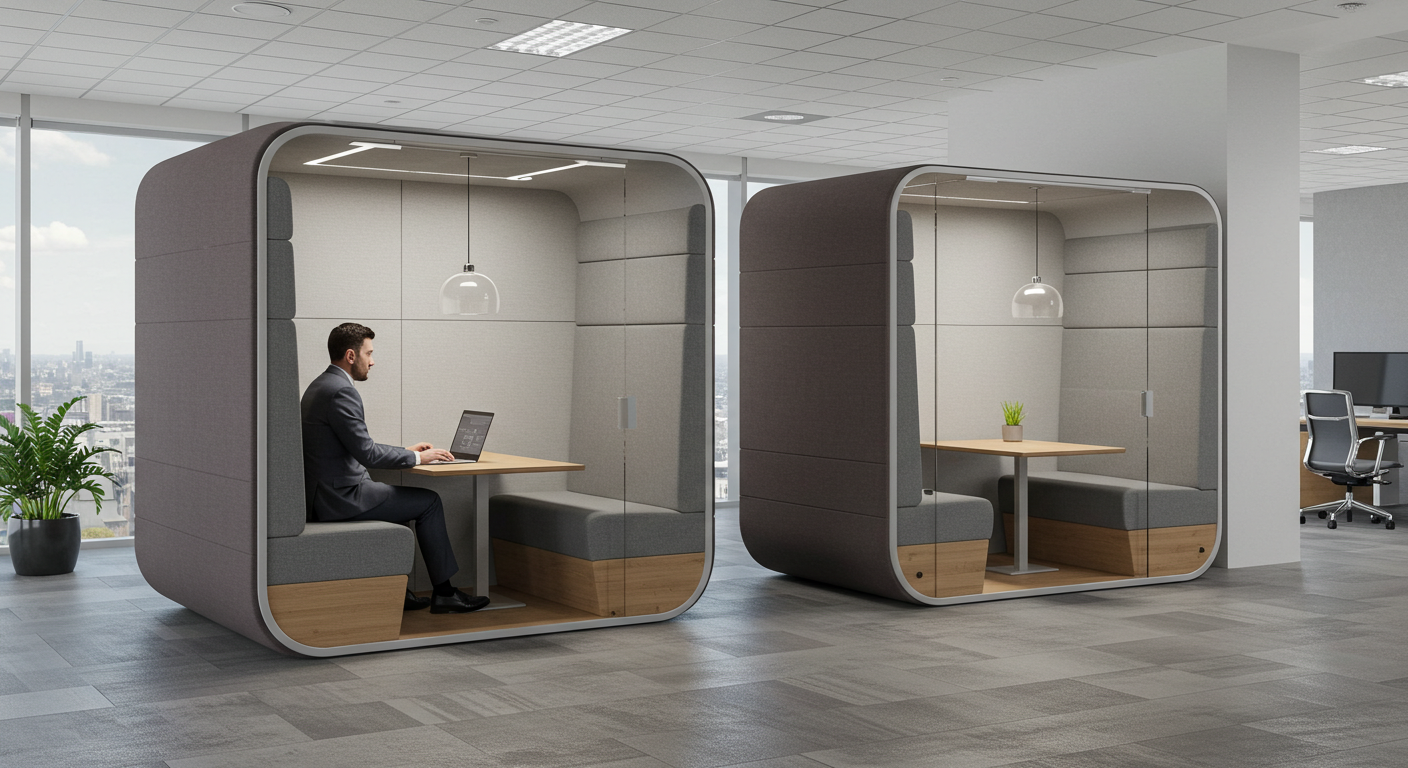
15. Collaborative and Modular Spaces with Wellness at the Core
The modern CEO’s office extends beyond the executive’s immediate desk to encompass collaborative spaces designed for teams and visitors. Modular design allows for rapid reconfiguration based on meeting size or project type. Integrated biophilic elements—like indoor plants, natural textures, and daylight access—promote a sense of wellness throughout. This holistic approach reinforces the CEO’s role as both decision-maker and culture-shaper, cultivating an environment that inspires confidence and creativity.

Conclusion:
The CEO’s office has evolved into a multidimensional environment that reflects not just personal style but also organizational values, modern work practices, and forward-thinking leadership. From sustainable materials to hybrid-friendly layouts and hospitality-driven amenities, each trend serves a dual purpose: enhancing executive presence while supporting the well-being of everyone who enters the space. In this era, leadership is defined as much by the spaces leaders inhabit as the strategies they pursue. A well-crafted CEO office is not just a room—it’s a statement of vision, identity, and influence.

